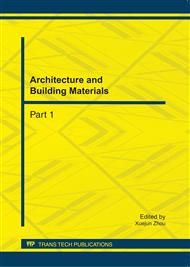p.633
p.638
p.644
p.650
p.654
p.660
p.664
p.676
p.680
Mechanical and Durability Properties of Recycled Aggregate Concretes Containing Fly Ash
Abstract:
The reutilization of waste concrete and fly ash produced by power plant is one way to develop green concrete. The addition of fly ash in recycled aggregate concrete has two methods, named equivalent replace and super-substitute technique. The workability of fresh concrete, compression strength, spilt and flexural strength of recycled aggregate concrete with different content of fly ash at different curing age are tested. Durability performance index such as sulfate attack, drying shrinkage and wear resistance is acquired base on the corresponding test. The result shows that the fluidity of fresh concrete is improved by the addition of fly ash. Before the age of 28d, the compression and flexural strength of recycled aggregate concrete with the contain of fly ash is lower than concrete without fly ash, after the age of 60d, the compression and flexural strength for FRC-10, FRC-10-2, FRC-10-4 are even higher than that of concrete without fly ash. The optimum equivalent replace ratio is 10%, and super-substitute ratio is 20% according to the compression and flexural strength. The performance of sulfate attack resistance, drying shrinking and wearing resistance of recycled aggregate concrete are significant improved as the containing of fly ash.
Info:
Periodical:
Pages:
654-659
Citation:
Online since:
September 2011
Authors:
Price:
Сopyright:
© 2011 Trans Tech Publications Ltd. All Rights Reserved
Share:
Citation:


